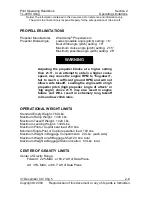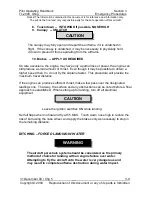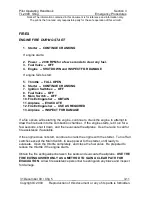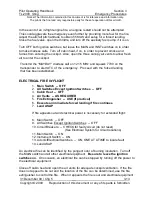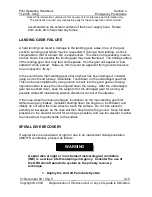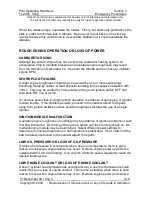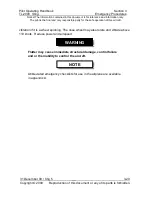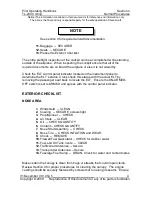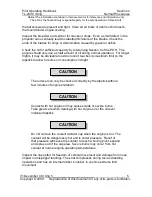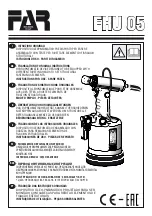
Pilot Operating Handbook
Section 3
TL-2000
Sting
Emergency Procedures
Notice! The information contained in this document is for reference and information only.
The pilot is the final and only responsible party for the safe operation of this aircraft.
31 December 09 / Chg 5
__
3-12
Copyright © 2009 Reproduction of this document or any of its parts is forbidden.
ENGINE FIRE
IN FLIGHT
During an in-flight fire do not deploy the aircraft parachute system
at high altitude. If the decision is made to use the parachute
system and conditions permit, attempt to fly (DIVE) the aircraft to a
lower altitude to minimize the time for the fire to spread within the
cockpit.
1. Fuel Valve -- OFF
2. Throttle -- FULL OPEN
3. Aux. Fuel Pump -- OFF
4. Ignition Switches -- OFF
5. Cabin Heat -- OFF
6. Air Vents -- AS REQUIRED
The side air vents may be aimed forward and/or aft to assist in cabin
smokeventilation. In an emergency they may be removed and
discarded. Also, a controlled side-slip may assist in clearing the cockpit
of smoke and fumes.
Maintaining approach speed, a low speed side-slip may cause the
aircraft to stall and may enter a spin.
7. Radio -- SET TO 121.5. TRANSMIT “MAYDAY, MAYDAY,
MAYDAY!” with AIRCRAFT ID and CURRENT
POSITION
8. All Non-Essential Switches -- OFF
9. Airspeed -- 55 KIAS
10. FLAPS - FULL
11. Execute a Forced Landing
WARNING
NOTE
WARNING

